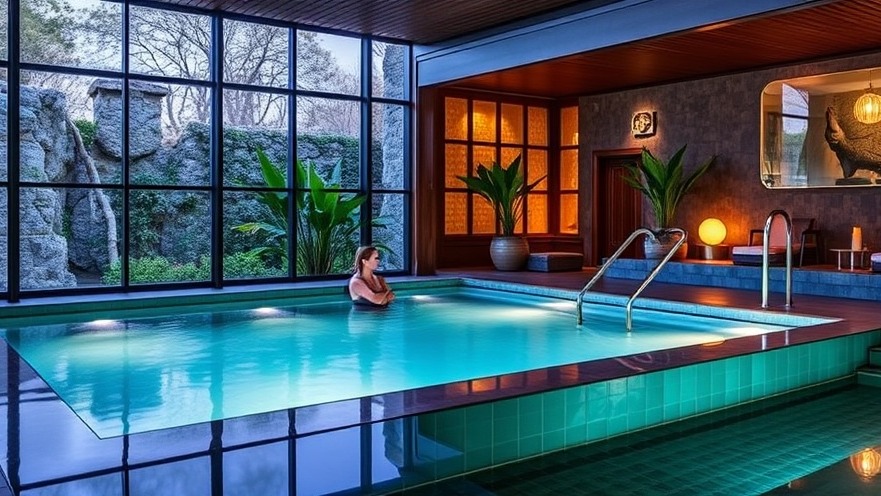
Why Spa Culture Matters More Than You Think
Step into almost any spa and you’ll notice the same soothing details — the calming scent of essential oils, soft lighting, the hush of voices kept intentionally low.
Guests arrive seeking escape, healing, and renewal. But behind the tranquility of the treatment room, spa teams often juggle demanding schedules, emotional labor, and the pressure to deliver a flawless guest experience every single time.
That’s where culture comes in. A spa’s atmosphere isn’t just created by décor or music — it’s shaped by the relationships, trust, and energy among the staff who deliver care.
“Trust is built in the smallest of moments.” – Brené Brown
For spa leaders, this means the micro-interactions between staff — a receptionist offering support to a therapist after a tough client, or a manager checking in with genuine care — lay the foundation for a culture that either lifts a team up or wears them down.
This article explores how three powerful pillars — psychological safety, staff wellness, and balanced autonomy — can transform a spa team from simply functioning to truly flourishing.
Foundational Background: Why Culture Matters in Spas
The concept of “healthy culture” has been studied across industries, but it holds unique weight in the wellness sector. Google’s landmark research project, known as Project Aristotle, revealed something surprising: the top factor that determines whether a team succeeds isn’t IQ, resources, or talent — it’s psychological safety.
“The number one factor in team effectiveness is psychological safety.” – Google’s Project Aristotle
In spa settings, this translates directly into whether your team feels safe enough to bring up concerns about client safety, suggest new treatments, or admit mistakes without fear of embarrassment.
The U.S. Surgeon General has also emphasized that mental health and well-being at work are essential for performance and retention. In a people-first industry like spas, this isn’t just good policy — it’s survival.
“People will not bring ideas forward if they fear humiliation.” – Amy Edmondson
For a spa, this might mean a massage therapist noticing a recurring issue with product quality. If they don’t feel safe speaking up, that small problem can snowball into a bad guest experience — or even a safety issue.

Turning Points & Industry Milestones
Burnout as a Hidden Epidemic
Surveys show that burnout ranks as the number one challenge for spa employees. Long hours, physical strain, and emotional care demands leave many therapists drained — which often leads to high turnover.
The Pandemic Wake-Up Call
The COVID-19 pandemic forced spa operators to rethink staff care. Overnight, employee safety, communication, and flexibility became central to operations. Staff well-being moved from “nice-to-have” to “non-negotiable.”
Shorter Workweek Experiments
The UK’s four-day workweek pilot demonstrated that employee wellness can coexist with productivity. For spas, even partial adoption — like staggered schedules or shorter shifts during peak season — could improve retention without sacrificing guest bookings.
“Trust is built in the smallest of moments.” – Brené Brown
These milestones remind us that culture isn’t built during board meetings — it’s shaped in daily micro-decisions: who gets a break between clients, how feedback is delivered, and whether staff feel heard.

Core Insights, Strategies, and Innovations
1. Psychological Safety in Action
In a spa, psychological safety can be woven into everyday rituals:
Pre-shift huddles where staff can raise concerns.
Managers asking therapists what support they need before a busy Saturday.
Normalizing learning from mistakes instead of punishing them.
“Why good leaders make you feel safe.” – Simon Sinek
In spas, good leadership means staff don’t fear speaking up about issues — whether it’s client boundaries, product shortages, or scheduling strains.
2. Wellness Initiatives for Staff
Wellness isn’t just for guests. The best spas extend care inward by:
Offering treatment credits so staff can enjoy massage, facials, or hydrotherapy.
Designing ergonomic setups to protect against repetitive strain injuries.
Building in quiet “reset rooms” where staff can decompress between treatments.
3. Autonomy With Accountability
A thriving spa team strikes a balance: therapists should have room to personalize treatments while staying aligned with brand standards. Setting goals using OKRs (Objectives and Key Results) provides clarity without micromanagement.
“Alignment enables autonomy. The stronger the alignment, the more autonomy we can afford to grant.” – Henrik Kniberg
For spas, this means giving staff freedom to adjust techniques while holding clear objectives like rebooking rates, upselling retail, or guest satisfaction scores.
Unique Value and Differentiators in Spas
Unlike many industries, spa culture is directly visible to the customer. A frazzled therapist or disengaged receptionist can shatter the atmosphere instantly.
What sets thriving spas apart?
Mission-driven alignment: Spas that extend their mission of healing inward to staff.
Authenticity: Guests can feel when care is genuine — and it starts with staff who feel valued.
Daily rituals: Pre-shift gratitude circles or closing-day debriefs build trust and emotional safety.
“Employee well-being is guest well-being.” – Industry insight
A guest walking out of a treatment relaxed and glowing is only possible if the therapist delivering that session isn’t running on fumes.

Practical Tips and Takeaways for Spa Leaders
Here are five actionable steps to start building a healthier spa culture today:
Run monthly team health monitors. Use a quick survey or roundtable check-in to measure trust, energy, and communication.
Add five-minute recharge rituals. Encourage staff to pause with breathing exercises or stretching between clients.
Pilot flex scheduling. Test staggered start times or shorter shift blocks during busy seasons.
Offer wellness perks. Provide free meditation app subscriptions, staff discounts on treatments, or even one free spa service per month.
Train supervisors in appreciative feedback. Replace criticism with curiosity and recognition.
“Engaged employees produce 23% higher profitability.” – Gallup Workplace Report
While spas may not calculate “profitability” the same way corporations do, the principle applies — engaged employees generate stronger guest loyalty, more rebookings, and higher retail sales.
Conclusion: Turning Culture into Your Spa’s Secret Advantage
The heartbeat of every spa isn’t the décor, the playlists, or even the treatments themselves — it’s the people who deliver the experience. When your staff feels safe to speak up, supported in their well-being, and trusted with autonomy, the guest experience naturally rises to new levels.
“People will not bring ideas forward if they fear humiliation.” – Amy Edmondson
The future of your spa may depend on creating an environment where every staff member feels confident to contribute their best ideas and energy.
Key lessons to carry forward:
Psychological safety fuels innovation and consistency. Encourage your team to share ideas and concerns without fear.
Staff wellness is non-negotiable. When therapists and estheticians feel cared for, they bring authentic care to guests.
Autonomy with accountability keeps teams motivated. Provide clarity on goals, then trust your staff to deliver in their own authentic way.
For spa leaders, the message is clear: culture is your strategy. Build it with intention, and you’ll not only reduce staff burnout and turnover but also create an environment where guests feel the difference the moment they walk through your doors.
Now is the time to pause, reflect, and take one concrete step this week toward building a healthier spa culture. Whether that’s starting a five-minute pre-shift check-in, offering a wellness perk, or simply asking your staff how they’re really doing — the ripple effect will be felt in every treatment, every conversation, and every guest’s lasting impression.
 Add Row
Add Row  Add
Add 




Write A Comment